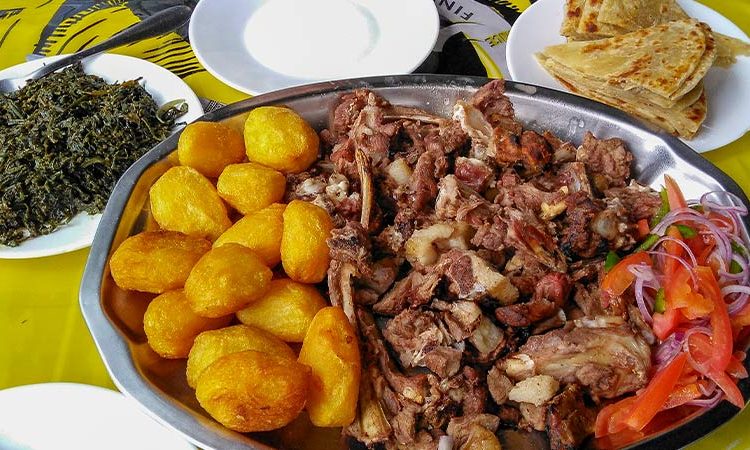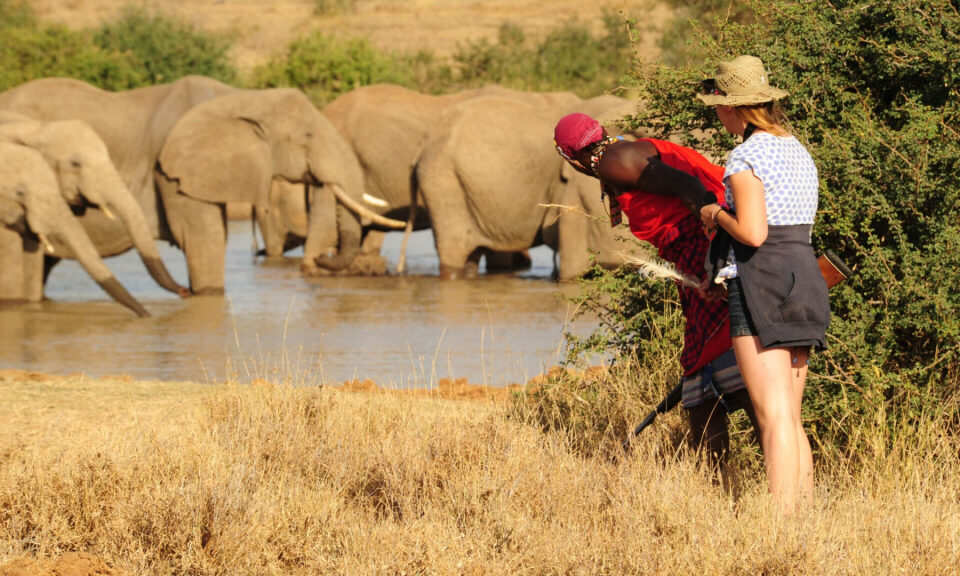- GET IN TOUCH WITH US:
- +256 753518160
- +256 777842166
- info@experiyatourcompany.com

Who are the Maasai people of Kenya?
November 17, 2025
What traditional foods should I try in Kenya?
November 18, 2025Can I Visit Maasai Villages?
Understanding the Significance of Maasai Village Visits
Visiting a Maasai village is one of the most profound cultural encounters you can experience in East Africa. The Maasai people, known for their vibrant traditions, striking red shúkà cloth, high-jumping adumu dance, and pastoral heritage, live in some of the most breathtaking landscapes in Kenya and northern Tanzania. Many travelers dream of stepping into a Maasai homestead, meeting warriors and elders, learning about customs, and understanding a culture that has retained its identity despite modern influences. Yet with that dream comes an important question: can you actually visit Maasai villages, and if so, how should you do it respectfully, ethically, and in a way that genuinely benefits local communities?
The answer is yes — you can visit Maasai villages, and these experiences are widely offered across Kenya and Tanzania. However, the quality and authenticity of the visit depends greatly on where you go, who organizes the experience, and how much community involvement is prioritized. This detailed guide explores everything you need to know before visiting a Maasai village, including what to expect, how to prepare, and how to ensure your visit supports cultural preservation and community empowerment.
Where Maasai Village Visits Take Place
Maasai cultural visits are commonly offered near major safari destinations. In Kenya, you’ll find them around Amboseli National Park, Maasai Mara National Reserve, Lake Naivasha, and even areas bordering Nairobi National Park. In Tanzania, the most common locations include the Ngorongoro Conservation Area, Serengeti National Park’s borders, Tarangire National Park, and Lake Manyara regions. These villages, often referred to as manyattas, consist of circular family compounds enclosed by thorn fences meant to protect livestock from predators.
Each village is home to extended Maasai families and their herds of cattle, sheep, and goats. Cattle remain central to Maasai culture, symbolizing wealth, strength, and resilience. Because many of these communities live close to protected areas, tourism has become an important supplemental income source. Well-organized visits help families fund education, healthcare, and conservation efforts.
What to Expect During a Maasai Village Visit
A typical village experience begins with a warm welcome by the community. You may be greeted with traditional singing, rhythmic chants, or the captivating adumu jumping dance performed by young warriors. Visitors are invited to observe, photograph, and sometimes participate in the dance. The atmosphere is joyful and ceremonial, designed to introduce guests to Maasai spirit and tradition.
After the welcome ceremony, you’ll often be shown how the Maasai build their houses — low, mud-and-cow-dung structures constructed by the women of the village. Guides explain family roles, social structures, rites of passage, and the significance of livestock. You may also see fire-making demonstrations using sticks and dry grass, a mesmerizing display of authentic, non-modern survival skills. Children might gather around, curious about guests, while elders share stories of their ancestry, migration patterns, and age-old customs.
Most visits conclude with a walkthrough of the village’s small craft market. Here, women and young artisans lay out handmade beadwork, sandals, ornaments, spears, necklaces, and bracelets, each bursting with vibrant colors symbolic of Maasai identity. Purchasing an item is not only a beautiful souvenir but also a meaningful way to support local livelihoods.
Are Maasai Village Visits Authentic?
Authenticity varies widely. Some villages near major tourist hubs receive many visitors daily, and the experience may feel rehearsed. Others, particularly those reached through community-focused tour operators, offer deeper, more personal encounters.
Authentic visits typically include:
Meaningful interaction with families rather than staged performances
Clear explanations from local guides about daily life, not just dances
Transparency about how your visit fee is used within the community
Opportunities to ask questions and learn respectfully
Space to observe real village activities rather than curated scenes
The goal is not to intrude or demand “perfection,” but to seek genuine cultural exchange. Working with ethical travel companies ensures you visit communities that have chosen tourism willingly and benefit directly from visitor support.
The Importance of Ethical Cultural Tourism
Ethical cultural tourism means ensuring that Maasai communities are not exploited or treated as tourist attractions. When organized responsibly, village visits become powerful tools for cultural preservation, income creation, and empowerment.
Ethical visits ensure that communities:
Set their own prices and manage earnings collectively
Decide how tourism fits into their lifestyle
Have control over what is shared and what remains private
Receive dignified representation rather than stereotypes
Choosing the right tour operator matters. Responsible companies work hand-in-hand with Maasai leaders to design experiences that respect tradition and support long-term development. They avoid rushed or intrusive experiences and instead prioritize cultural dignity and community benefit.
What You Should Know Before Visiting
Before stepping into a Maasai village, it helps to understand a few important cultural considerations. Dress modestly out of respect for local customs and avoid wearing overly revealing clothing. Always ask before taking photos — the Maasai are generally open to photography, but polite consent strengthens trust.
Your guide will explain appropriate greetings, behaviors, and any taboos to avoid. For example, entering certain private areas of the homestead without invitation is discouraged. Likewise, be respectful during ceremonies and dance demonstrations. You’re welcome to join in the jumping dance, but follow cues from the warriors and avoid pushing yourself forward too aggressively.
Visitors should also be prepared for modest living conditions. These villages maintain their traditional lifestyle, so expect earthen floors, smoky interiors, and simple household arrangements. Embrace the authenticity rather than comparing it with modern comforts.
The Role of Village Fees and Craft Purchases
Entrance fees are standard, and they play a vital role in community sustainability. These funds usually support school fees for children, village improvements, water projects, or healthcare access. Some communities share fee distribution among all families to ensure equal benefit, while others allocate funds based on needs.
Purchasing beadwork is another direct way to support Maasai artisans, particularly women. Their bead designs carry deep symbolic meaning — red for bravery and unity, blue for the sky, black for resilience, and green for nourishment. Buying from the village market ensures that your money goes straight into sustaining this remarkable craft tradition.
The Meaning Behind Maasai Traditions
A visit to a Maasai village is never just about entertainment; it’s an immersion into centuries of cultural resilience. The Maasai have preserved their pastoral way of life despite environmental changes, modernization, and external pressures. Their traditions — from warriorhood rituals to marriage ceremonies, from cattle herding to intricate bead patterns — carry stories of identity, community, and spiritual connection to the land.
Understanding this context deepens the impact of your visit. You begin to see the Maasai not as performers but as guardians of culture, people who have adapted without losing their heritage. Your presence becomes part of a broader narrative of learning, respect, and cultural appreciation.
Why Choosing the Right Tour Company Matters
To ensure your experience is respectful, educational, and authentic, it’s essential to travel with a safari company that prioritizes community partnerships. The right operator maintains strong relationships with local leaders, ensures fair compensation, and prepares guests appropriately. They also avoid over-tourism by rotating visits among different villages or arranging exclusive, pre-planned meetings.
This results in a more immersive, intimate experience for you and a more sustainable tourism model for the Maasai people.
Should You Visit a Maasai Village?
Yes — visiting a Maasai village can be one of the most meaningful experiences of your East African journey. It offers a chance to connect with one of the region’s most iconic cultures, learn deeply about ancient traditions, and support communities preserving their heritage with pride. The key is to approach the experience with respect, curiosity, and a commitment to responsible travel.
For the most authentic, culturally respectful, and well-organized Maasai village experience, consider booking your safari and cultural visits with Experiya Tour Company. Their strong community partnerships, ethical approach, and personalized itineraries ensure your journey is enriching for both you and the local people.




